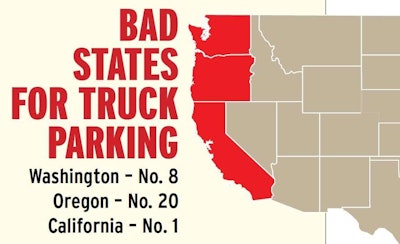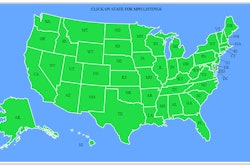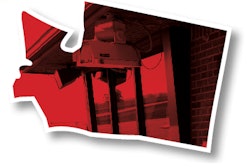 States along the I-5 corridor ranked fairly high for the biggest truck-parking issues in Overdrive’s December 2015 analysis of the problem. That ranking was based in part on data from the Jason’s Law survey and Overdrive’s own reader survey about the parking issue.
States along the I-5 corridor ranked fairly high for the biggest truck-parking issues in Overdrive’s December 2015 analysis of the problem. That ranking was based in part on data from the Jason’s Law survey and Overdrive’s own reader survey about the parking issue.Owner-operator Tilden Curl, in his role as an Owner-Operator Independent Drivers Association board member and driver advocate, has been increasingly active in the National Truck Parking Coalition. His home area of Olympia, Washington, now more or less part of the Seattle metro area, marks a northern edge of a roughly 500-square-mile densely populated area.
If you don’t include three truck stops at the north, south and eastern edges, the area contains “only about 200 to 300 truck parking spaces. … There’s just nothing there, really,” Curl says. Yet “just shy of 15,000 commercial motor vehicles a day go through here. How are these folks supposed to park for their 30-minute break or just find a place to stop? Basically, the lack of concern about it is astonishing to me.”
Capt. Mike Dahl of the state patrol agrees and has made it part of his concern, though he admittedly has made little progress. When we talked in October, he had just met with a state senator about the parking issue. “We’re looking to get a fairly large [weigh station] just outside of Seattle metro on I-90,” he says. “Part of that is we’d like to add 20 to 25 more parking stalls exclusively for truck parking.”
Part of his conversation with the senator also emphasized expansion of existing facilities. “There should be some parking consideration, whether we can accommodate even a handful” of new spaces, he says.
As for existing scales, they’re open to truckers for parking, “as long as we’re not an open scale,” Dahl says. That excludes most of the ports of entry, given their usual 24/7 operation.








